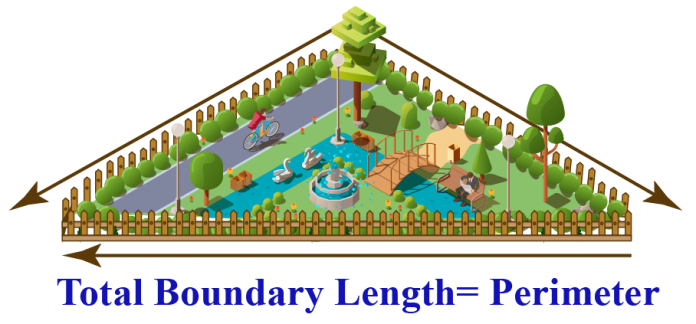A triangle is a two-dimensional shape that has three sides and three vertices. Triangles is an important topic study of which is applied in fields like architecture and construction. It is useful to design and build various supporting structures and heavy artworks. Many students learn all about triangles in their mathematics classes, including geometry and trigonometry. By learning everything about the types, area, and perimeter of triangle, they can easily improve their mathematical skills to solve more complex math problems.
Types of triangles
The triangles are categorized into different types based on the length of their sides and angels. There are mainly three types of triangles: Equilateral Triangle, Isosceles Triangle, and Scalene Triangle.
Equilateral Triangle: length of all its sides is equal, and all the angles are the same size; An equilateral triangle is a triangle that has all the sides equal in length. The angle formed at each vertice of such a triangle is 60 degrees.
Isosceles Triangle: lengths of two sides of this triangle are equal, and two angles are the same size. The isosceles triangle is a triangle that has two equal sides and two equal angles.
Scalene Triangle: length of none of the sides is equal, or none of the angles are the same. It is the most common type of triangle, it has no equal sides and no equal angles.
Angles of a Triangle
The triangle has three angles, and the sum of angles of a triangle is equal to 180 degrees. When the degree of the two angles is already known, we can easily calculate the third angle by subtracting the sum of the known angles from 180. If the angle of a triangle is below 90 degrees, it is called an acute angle. The angle that measures above 90 degrees is known as an obtuse angle.
Right Angled Triangles
A right triangle is a triangle with one right angle. I.e., It has an angle that has a measure of 90-degree. The side opposite to this right angle is referred to as the hypotenuse. When the lengths of any two sides of a right triangle, it is easy to find the length of the unknown side by using the equation a^2 + b^2 = c^2, where “c” implies the length of the hypotenuse and “a” and “b” refer to the lengths of the other two sides.
Area & Perimeter of a Triangle
The area of triangle is the total space enclosed within its sides. The area of a triangle is calculated as half of the base times height, i.e., A = 1/2 x b x h. The perimeter of a triangle is the sum of the length of all three sides. It is usually calculated by adding the length of each side of a triangle. For example, if a triangle has three sides with lengths a, b, and c, then this triangle’s perimeter is calculated as a+b+c.
Let us learn to find the perimeter of all three types of triangles.
- The perimeter of an equilateral triangle is three times the length of the side. If ‘a’ represents the length of a side of an equilateral triangle, then the perimeter of this triangle is 3 X a.
- The perimeter of an isosceles triangle is two times the length of the equal side plus the third side’s length. If ‘a’ represents the length of two sides and b represents the length of the third side, then the perimeter of this triangle is calculated using formula 2(a) + b.
- The perimeter of a scalene triangle is simply the sum of the length of all three sides. If a, b and c represent the length of a scalene triangle’s sides, its perimeter is calculated using the formula a+b+c.










